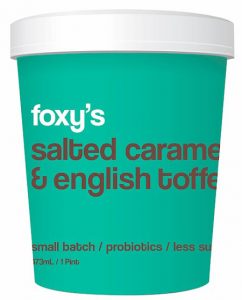In a decision issued [June 19, 2019] in Marchand v. Barnhill et al., No. 533, 2018 (Del. June 19, 2019), the Delaware Supreme Court reversed the dismissal of a stockholder derivative lawsuit against the members of the board of directors and two officers of Blue Bell Creameries USA, Inc.
 The lawsuit arose out of a serious food contamination incident in 2015 that resulted in widespread product recalls and was linked to three deaths. The Delaware Supreme Court, applying the “duty to monitor” doctrine enunciated in In re Caremark International, Inc. Derivative Litigation, 698 A.2d 959 (Del. Ch. 1996), and noting the very high hurdle to claims under it, nonetheless ruled that the plaintiff had adequately alleged the requisite bad faith by the members of the Blue Bell board.
The lawsuit arose out of a serious food contamination incident in 2015 that resulted in widespread product recalls and was linked to three deaths. The Delaware Supreme Court, applying the “duty to monitor” doctrine enunciated in In re Caremark International, Inc. Derivative Litigation, 698 A.2d 959 (Del. Ch. 1996), and noting the very high hurdle to claims under it, nonetheless ruled that the plaintiff had adequately alleged the requisite bad faith by the members of the Blue Bell board.
Plaintiff did so by using information obtained in a Section 220 books and records demand to show facts supporting their contention that the Company did not have in place “a reasonable board-level system of monitoring and reporting” with respect to food safety, which the Court deemed to be “a compliance issue intrinsically critical to the company’s business.”
After concluding that “food safety was essential and mission critical” to Blue Bell’s business, the Supreme Court ruled that bad faith was adequately pled by alleging “that no board-level system of monitoring or reporting on food safety existed.” The Court thus declined to dismiss a claim that the directors breached their duty of loyalty, potentially exposing directors to non-exculpated (and potentially not indemnifiable) monetary damages.
In light of the Blue Bell decision, boards of directors should review carefully their board processes and procedures to ensure that “reasonable compliance system and protocols” are in place with respect to “safety and legal compliance” and other regulatory and business threats that may pose significant risks for their particular company.
Equally important, boards should document the procedures followed to identify significant risks, including advice from management, counsel and other advisors, as well as the processes and procedures implemented to provide for board reporting and appropriate supervision of these risks, and maintain written records of the implementation of these processes and procedures in practice. The principal basis upon which the Court in Blue Bell found the record to support the complete failure to impose any board-level “system of controls” with respect to food safety was the absence of any written board procedures or documented discussion on the topic, and the lack of any mention of food safety in board minutes in periods before the food contamination outbreak, despite previous food safety issues that allegedly had arisen in previous years, including positive tests for listeria in Company facilities beginning in 2013.
The Blue Bell decision makes clear that oversight with respect to these kinds of issues is a board-level responsibility, and goes beyond mere compliance with laws. The Delaware court opined that “the fact that Blue Bell nominally complied with FDA regulations does not imply that the board implemented a system to monitor food safety at the board level.”
“In short,” the Delaware Supreme Court ruled, “to satisfy their duty of loyalty, directors must make a good faith effort to implement an oversight system and then monitor it.” While “routine regulatory requirements, although important, are not typically directed at the board,” companies should ensure that they have written processes and procedures in place for the board to be timely informed about, and to monitor regularly, compliance, safety and business developments that are important to the company, or may be viewed as critical to the company in hindsight. [1]
This decision, while only on a motion to dismiss, illustrates the continued importance of the Caremar kdoctrine as a strand of Delaware law governing the conduct of directors. While the burden for withstanding a motion to dismiss a Caremark claim is high, and the theory remains “possibly the most difficult theory in corporation law upon which a plaintiff might hope to win a judgment,” [2] it can be met. Caremark is an important tool in the Delaware jurisprudential arsenal for enforcing what Delaware courts view as reasonable director conduct, and when applied sends a powerful message because of the potential it creates for personal director liability.
11.jul.19
Harvard Law School Forum on Corporate Governance and Financial Regulation
Brian Frawley, Joseph Frumkin and Krishna Veeraraghavan
https://corpgov.law.harvard.edu/2019/07/11/bad-faith-monitoring-on-food-safety-issues/












